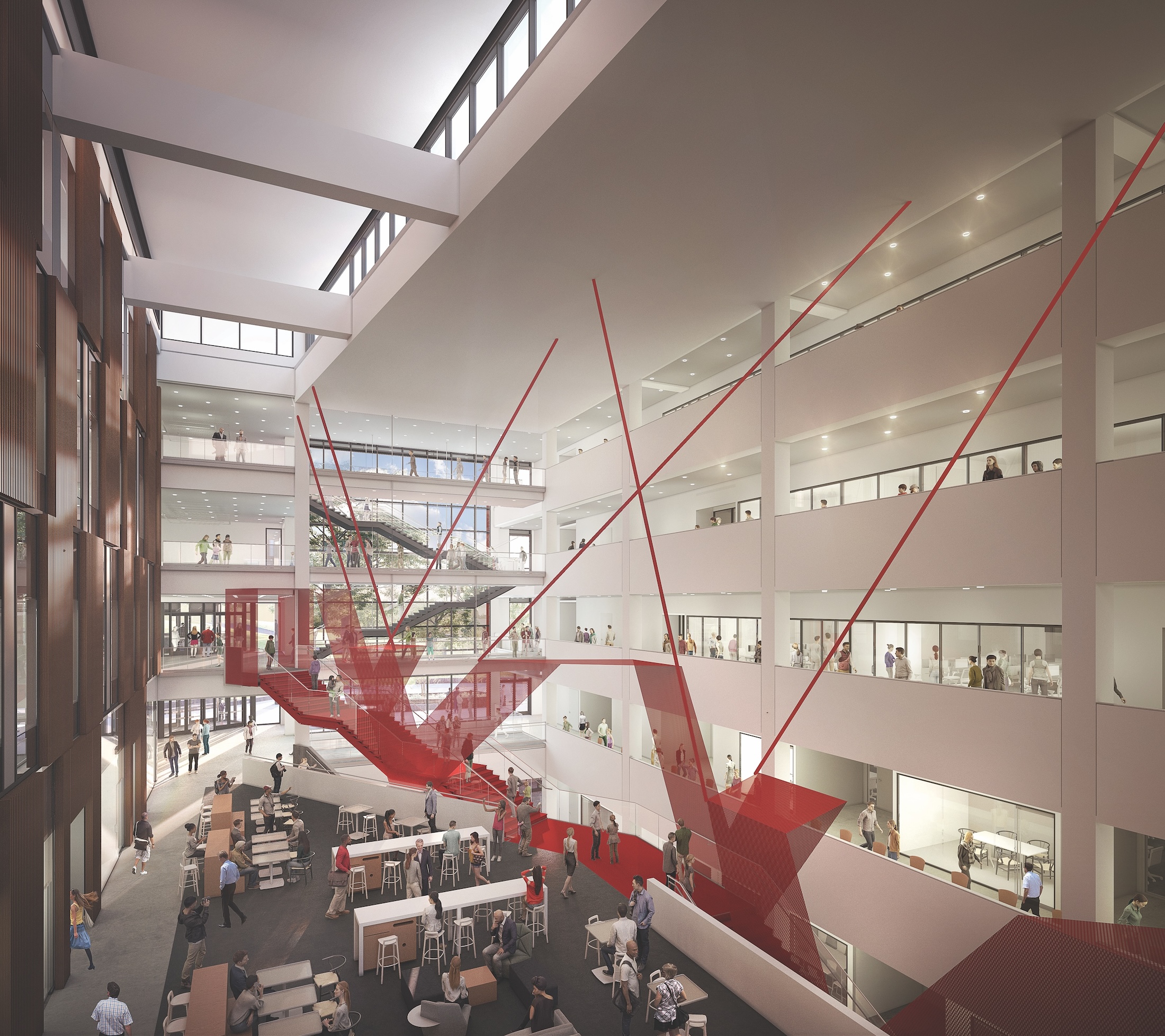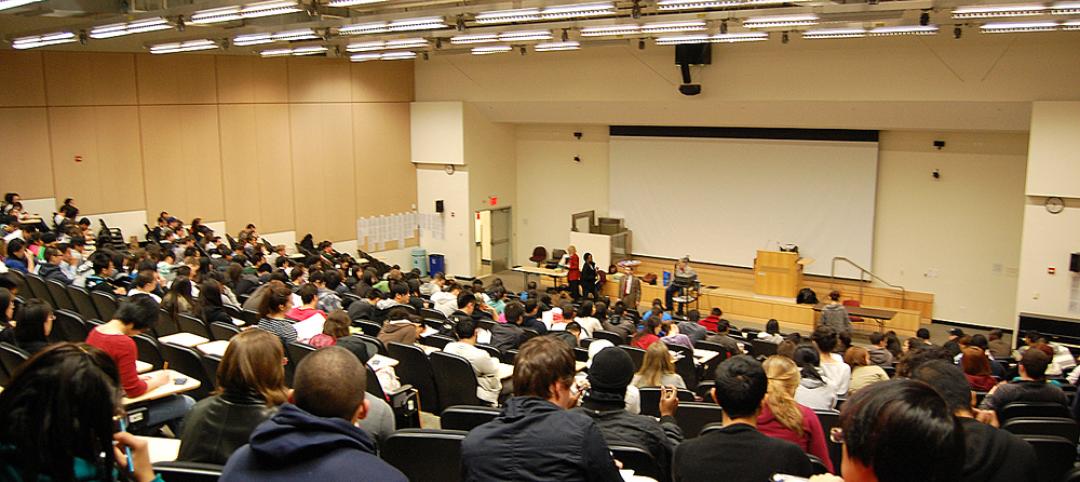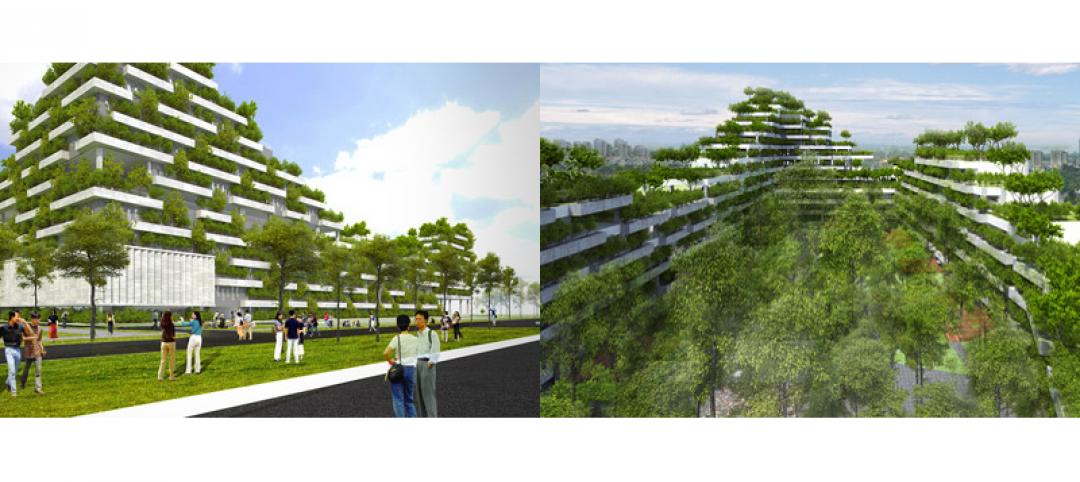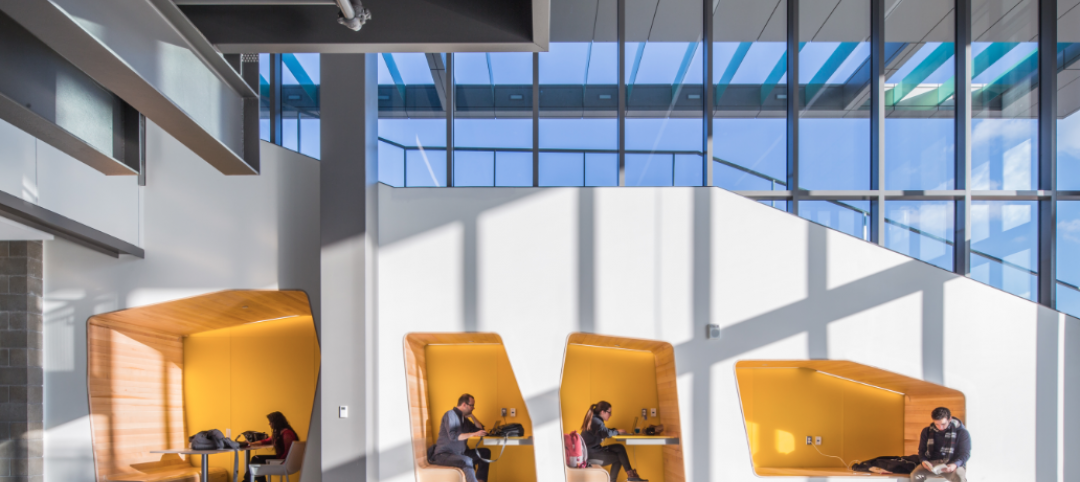Coming out of the Coronavirus-inspired shift in academic learning, many colleges and universities are trying to find ways to attract students back to campus. Will residences, amenities, services do the trick? While they ponder a solution, another issue is burgeoning.
Both public and private academic institutions are evaluating their use of space more than ever. Capital planning, limited available land, and space utilization studies tell them what they need to know: optimization is key. There is a growing desire for buildings that can stand the test of time—ones that offer students something serviceable and special.
Higher education institutions have found a way to hit many birds with one stone. From attracting students, increasing interpersonal engagement, and making the most of pre-existing inventory and land, one design may answer it all: flexible buildings.
Designing Flexible University Buildings
Designing and building flexible university buildings has been a common task among AEC firms throughout 2023. Planning for space that accommodates dynamic programming within 50-year lifecycles is a “universal theme” witnessed this year, according to Greg Fraikor, Higher Education Core Market Leader at DPR Construction. The flexible design of these buildings benefits university leaders and students alike—not only in the way of optimizing space, but also for promoting community, connectivity, and collaboration among end-users. Built to adapt, flexible spaces merge disciplines together in novel ways, something that single-use buildings are not typically designed to do.
Skanska’s Lew Guerrette, Executive Vice President and National Higher Education Advisory Council chair, has seen a trend toward fewer large lecture halls and an increase in labs, multipurpose studios, flexible rooms, and maker spaces. For example, the Rubenstein Arts Center at Duke University incorporates six multipurpose studios that reflect flexibility. Each room can be adapted into an art exhibit, classroom, public program space, and more.
There has even been a slowing demand for traditional libraries, which are being replaced by amenity-driven learning commons facilities, according to Léo Lejeune, LEED AP, Senior Principal and Education Sector Leader with Stantec. These are facilities that not only accommodate the need for quiet study spaces, but also access to technology, group study areas, and dining environments that support large social activities.
While there might not be an official name for these multipurpose buildings, global architecture and design firm Gensler refers to them as an “education ecosystem.” They can be holistic study spaces, cross-college classroom hubs, or even student entertainment and living spaces. One of the rising archetypes, however, correlates to one of the other big trends in higher education planning today: STEM.
STEM University Buildings
STEM buildings like research laboratories, biomedical centers, and health science buildings are the most in demand on campuses. As universities retain a focused interest in STEM learning, even these spaces are being challenged to increase flexibility for students and university partners.
The Architectural Resources Cambridge- and ZGF-designed UMass Chan Medical School’s New Education and Research Building features program and research space—as well as administrative offices, collaboration spaces, and conference rooms. It aims to support all three of the university’s graduate schools with research space that can accommodate more than 70 principal investigators. The flexible space will allow the university to increase class size and open up laboratory space in other campus buildings—aiding in the industry’s appeal for more medical professionals.
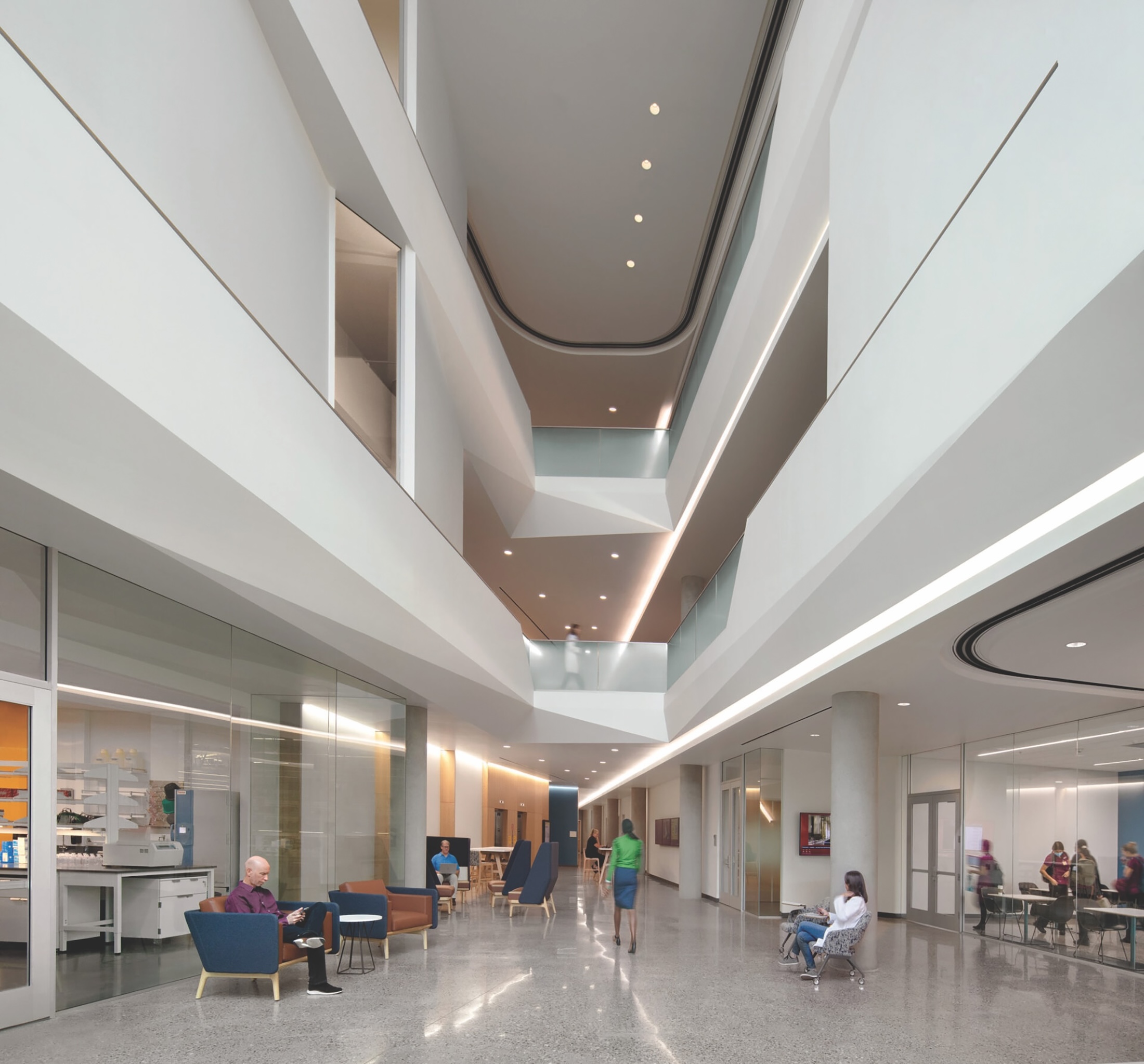
“Universities recognize that difficult research problems require multidisciplinary solutions,” says Sam Miller, FAIA, LEED AP, Partner, LMN Architects. As a result, projects that encourage mixing and collaborative research are more common, as are buildings that are flexible and adaptable over time to meet changing needs.
Conversely, firms like Page Southerland Page are seeing a decrease in performing arts facilities and free-standing student unions.
“We interpret this as a pendulum swing due to the interest in STEM core learning … a counterpoint to recent student life-focused improvements luring students to return to campus from our era of remote education,” says Todd Ray, FAIA, LEED AP, Design Director with Page.
While the construction of STEM buildings can be funded in many ways, science buildings are typically the first to be funded by endowments or private donors because of their importance to the university’s future, according to Guerrette.
“When planned thoughtfully, these spaces are designed and built for long-term flexibility, creating interdisciplinary, state-of-the-art facilities,” says Guerrette.
Adaptive Reuse in higher education
With land usage at the forefront of institutions’ minds, capital planning activities like renovations and modernizations are being increasingly considered over new construction. Reusing older single-use buildings into “educational ecosystem” ones can be more economical and sustainable than new construction, according to Gensler Education Leaders Deborah Shepley, AIA, LEED AP, and Mark Thaler, AIA.
“Whether to save money on new construction costs or adhere to seismic building code mandates, adaptive reuse projects are on the rise at colleges and universities,” says Sam Wen, Construction Manager with PCL Construction.
The Stantec-designed New Learning Commons at Kettering University, Flint, Mich., thoughtfully weaves power and technology throughout the building to accommodate alternative configurations. Designing with the future in mind allows spaces to adapt in unforetold ways—even years down the road.
Student Wellness and Student-First Design
Along with the strive to bring students back to campus, projects that emphasize student health and wellness are on the rise in 2023. However, these are becoming more than the stand-alone health centers of the past, according to Chris Purdy, AIA, LEED AP, Vice President and Director of Higher Education, SmithGroup.
“We’re seeing fusion buildings that include mental and physical wellness spaces partnered with other programs—such as housing, dining, recreation, and living/learning—for a more holistic approach,” says Purdy.
The key driver for firms is building a purpose of place. Gensler’s 2022 Education Engagement Index revealed a correlation between students’ relationships with their peers and their perceived success. When students returned to campus post-Coronavirus, the correlation became even more staggering, according to Gensler’s Thaler.
Environments that promote collaboration and community building even lead to student success and retention, according to a College Pulse and Inside Higher Ed survey. Student success centers remain in the conversation as colleges and universities consolidate and grow their resources for students, according to Fraikor.
The LMN Architects-designed Clifton Court Hall at the University of Cincinnati brings together seven academic departments to aid in learning and social engagement. The building will feature a mix of flexible classroom spaces, more than 1,000 classroom seats, and a large community atrium that ties together conference rooms and collaboration spaces.
Student Housing
One of the biggest challenges in higher education today is producing more affordable student housing. Not only do institutions have the goal of increasing the student experience, but they also have to ensure a profitable revenue stream—something that has undoubtedly dwindled since remote and hybrid learning skyrocketed. What’s different now, according to David Damon, AIA, LEED AP, Global Practice Leader for Higher Education at Perkins&Will, is the sheer scale and ambition of many of these projects.
“Many universities are investing in the development of large-scale new student housing facilities,” says Damon. “These facilities typically offer more amenities and conveniences, attracting students and potentially generating more revenue through increased occupancy rates.”
Attaching services to on-campus housing—dining areas, mental health services, study spaces, and student success centers—almost treats the space as a “transformed” student union building, says Shepley.
When it’s not new construction, student housing renovation projects remain steady as universities and schools look to better adapt to evolving student needs, according to Ron Simoneau, LEED AP, DBIA, CM LEAN, Executive Vice President of Education with Shawmut Design and Construction.
The end goal is this: Provide an improved experience for higher education students. The decline in single-use buildings is well under way. What flex spaces are the most optimal, and what the future of flex buildings looks like, are still questions that remain without definitive answers.
Related Stories
University Buildings | Oct 16, 2015
Competency-based learning: A glimpse into the future of higher education?
For better or worse, the higher education experience for many young Millennials and Gen Zers will not resemble the four-year, life-altering experience that we enjoyed—it’s just too costly.
University Buildings | Sep 21, 2015
Vietnamese university to turn campus into ‘terraced forest’
Pockets of plantings will be dispersed throughout the staggered floors of the building, framing the expansive courtyard at its center.
University Buildings | Sep 21, 2015
6 lessons in campus planning
For campus planning, focus typically falls on repairing the bricks and mortar without consideration of program priorities. Gensler's Pamela Delphenich offers helpful tips and advice.
Mixed-Use | Aug 26, 2015
Innovation districts + tech clusters: How the ‘open innovation’ era is revitalizing urban cores
In the race for highly coveted tech companies and startups, cities, institutions, and developers are teaming to form innovation hot pockets.
University Buildings | Aug 13, 2015
Best of Education Design: 9 projects named AIA Education Facility Design Award winners
Georgia Tech's Clough Commons, Boston's Berklee Tower, and seven other facilities were honored for aiding learning and demonstrating excellent architectural design.
Giants 400 | Aug 7, 2015
UNIVERSITY SECTOR GIANTS: Collaboration, creativity, technology—hallmarks of today’s campus facilities
At a time when competition for the cream of the student/faculty crop is intensifying, colleges and universities must recognize that students and parents are coming to expect an education environment that foments collaboration, according to BD+C's 2015 Giants 300 report.
Contractors | Jul 29, 2015
Consensus Construction Forecast: Double-digit growth expected for commercial sector in 2015, 2016
Despite the adverse weather conditions that curtailed design and construction activity in the first quarter of the year, the overall construction market has performed extremely well to date, according to AIA's latest Consensus Construction Forecast.
University Buildings | Jul 28, 2015
OMA designs terraced sports center for UK's Brighton College
Designs for what will be the biggest construction project in the school’s 170-year history feature a rectangular building at the edge of the school’s playing field. A running track is planned for the building’s roof, while sports facilities will be kept underneath.
University Buildings | Jul 21, 2015
Maker spaces: Designing places to test, break, and rebuild
Gensler's Kenneth Fisher and Keller Roughton highlight recent maker space projects at MIT and the University of Nebraska that provide just the right mix of equipment, tools, spaces, and disciplines to spark innovation.
University Buildings | Jul 2, 2015
Design for new pavilion in Toronto includes a ‘peel-away’ façade
An architect's proposal for a renovation of the main office building at the Ontario College of Art and Design features a façade that fans out from the edges of the building, like it’s opening up to visitors.


